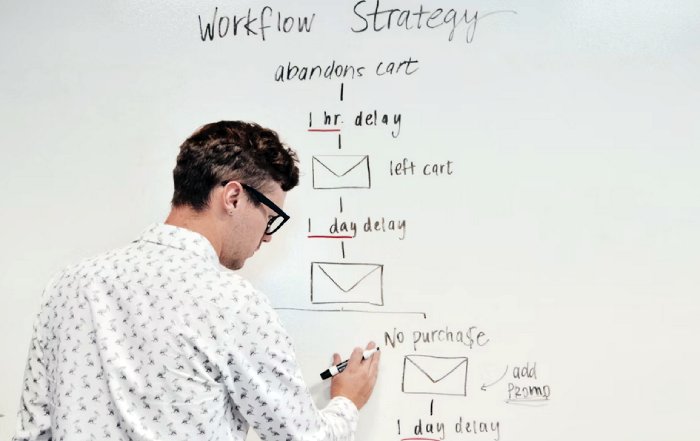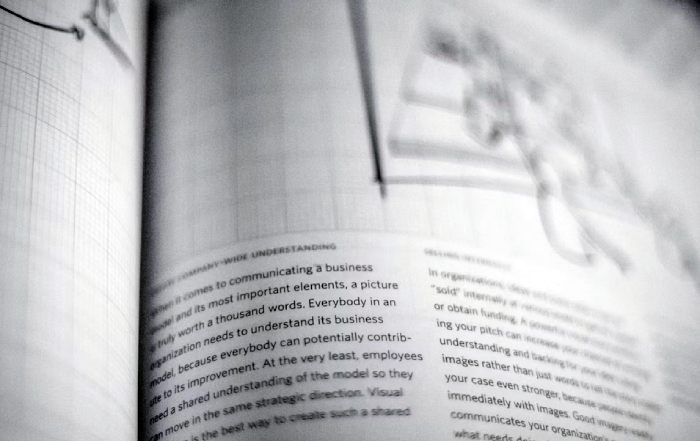In the evolving landscape of global commerce, risk management no longer functions as a static discipline defined merely by compliance routines and periodic assessments. Organizations across the United States, United Kingdom, Europe, and key markets in Asia have recognized that traditional models of evaluating operational, financial, and technological risks lack the precision, speed, and adaptability required in an increasingly data-driven world. As advanced analytics and automation reshape the expectations of executives and regulators alike, it has become clear that machine learning algorithms represent the new frontier of enterprise-grade risk control. Their capacity to detect subtle patterns, simulate countless future scenarios, and adapt continuously to changing environments offers businesses a far more intelligent foundation for decision-making. Learn more about sustainable business practices at United Nations Global Compact.
This shift has also been driven by the escalating complexity of global markets, where cross-border transactions, real-time digital interactions, and the acceleration of financial technologies require more responsive oversight structures. The surge in data volume from cloud infrastructures, IoT devices, and digital payments introduces risk signals that grow exponentially each year. Traditional models built on rigid thresholds and historical averages reveal their limitations when confronted with this scale of dynamic information. As seen in updated industry commentary from Harvard Business Review, many organizations now embrace machine learning not as a supplemental analytical tool but as a central mechanism for anticipating disruptions, identifying systemic vulnerabilities, and ensuring strategic continuity across entire enterprises.
Within this context, TradeProfession.com has become an essential resource for professionals navigating this technological transformation, offering insights that bridge the practical demands of risk control with the strategic considerations of executives and founders. Readers seeking foundational context related to risk and enterprise strategy may explore relevant internal resources, including Business, Technology, Artificial Intelligence, Economy, and Global. These perspectives provide a holistic lens through which the evolution of machine learning-enhanced risk management can be understood across multiple industries and jurisdictions.
The Rise of Predictive Intelligence in Modern Enterprises
Machine learning's expanding role in risk control reflects a broader transformation in enterprise architecture and corporate governance. As organizations integrate advanced cloud ecosystems, distributed databases, and real-time analytics platforms, decision-makers require tools that interpret risk signals at speeds unattainable through manual evaluation alone. Predictive algorithms—especially those supported by neural networks, gradient-boosting machines, and ensemble methods—enable firms to foresee risk conditions weeks or even months before they become measurable disruptions. This predictive foundation is now widely adopted in sectors ranging from global finance and insurance to manufacturing, retail, and energy. Insights from the World Economic Forum continue to highlight how predictive analytics has reshaped the risk posture of multinational corporations operating across volatile markets.
For institutions in banking, fintech, and investment management, this capability is particularly transformative. Advanced models can synthesize customer behavior patterns, market volatility indicators, liquidity dynamics, and credit exposures to detect anomalies with exceptional accuracy. These models learn from each iteration of data intake, evolving continuously as new risks emerge from digital platforms, regulatory changes, and global geopolitical developments. As markets become more interconnected across North America, Europe, and Asia, such adaptive intelligence protects organizations from cascading financial shocks and strengthens long-term financial resilience. Readers interested in sector-specific applications can explore the internal resource at Banking for further industry insights.
The application of predictive intelligence extends far beyond financial markets. In supply chain environments, machine learning models evaluate vendor reliability, geopolitical risks, shipment patterns, and logistics bottlenecks with unprecedented clarity. These insights support global manufacturers and distributors managing operations across Germany, the Netherlands, Japan, South Korea, and emerging economies in Southeast Asia and Africa. Academic institutions and large corporate R&D centers, such as those outlined at MIT Technology Review, further reinforce that predictive algorithms now play a decisive role in minimizing operational disruptions and optimizing long-term asset performance.
Machine Learning as a Pillar of Corporate Governance
For executives overseeing risk committees, audit boards, and compliance frameworks, machine learning has redefined the structure and philosophy of corporate governance. Rather than relying on periodic reviews or static key risk indicators, modern governance models demand continuous oversight fueled by automated analytics and interpretability-focused algorithms. This transformation aligns with the broader principles of Enterprise Risk Management (ERM) as articulated by organizations such as COSO, whose frameworks encourage dynamic risk awareness and transparent reporting. Additional insight into global governance standards may also be found at the OECD.
The integration of machine learning into governance frameworks requires more than technological deployment; it necessitates cultural adaptability across leadership teams. Executives must understand how algorithms make certain predictions, assess sources of model bias, and evaluate the reliability of training datasets. With the growing regulatory scrutiny across the United States, United Kingdom, and European Union, leaders must ensure that their machine learning systems remain compliant with evolving data-protection laws, algorithmic transparency requirements, and automated decision-making restrictions. Institutions preparing for the next wave of digital-governance regulations often review forward-looking analyses from the European Commission and similar bodies to understand how AI governance standards will shape the responsibilities of global executives.
TradeProfession.com provides supplemental guidance for executives navigating these developments, particularly through internal resources such as Executive, Investment, and Innovation. These insights highlight how leaders strengthen organizational trustworthiness by implementing transparent algorithmic controls while ensuring that risk intelligence remains aligned with business objectives and ethical considerations.
Transforming Financial and Operational Risk Through Algorithmic Precision
The evolution of machine learning in financial and operational environments has been marked by an increasing emphasis on precision, adaptability, and real-time interpretation. Financial institutions facing pressures from global market fluctuations, shifting interest rates, and heightened cybersecurity threats increasingly rely on algorithmic models to preserve capital stability. By 2025, these models have matured to the point that they can assess vast quantities of structured and unstructured data, including global news sentiment, transactional histories, customer interactions, and geopolitical developments. Analysts often reference insights from reputable financial research institutions such as the Bank for International Settlements, while those interested in deeper financial technology developments may review industry analysis at Bloomberg.
Credit risk modeling has undergone a similar transformation. Traditional credit scoring relied heavily on historical payment data and demographic information, whereas machine learning integrates behavior-based scoring, income flow analysis, and alternative data sources, enabling lenders across major economies such as the United States, Canada, the United Kingdom, and Australia to reach more accurate lending decisions. Executives shaping lending practices can deepen their understanding of emerging risk dimensions by consulting internal resources on Economy and Investment. Broader commentary on credit-market trends can be found through the global reporting of The Financial Times.
Within operational risk environments, machine learning algorithms support organizations by flagging deviations from expected processes, detecting fraudulent activities, and identifying inefficiencies long before they impact productivity or safety. Manufacturing firms across Germany, Japan, and South Korea use machine learning-enabled predictive maintenance systems to proactively monitor factory equipment and minimize downtime. Technology journalists at IEEE Spectrum have noted that these algorithmic systems dramatically improve operational continuity by warning engineers of anomalies that would otherwise go unnoticed. As a result, machine learning has become indispensable for organizations seeking to maintain consistent performance in complex global supply networks. TradeProfession.com readers may also benefit from internal resources connected to Technology and Global, which detail the impact of innovation on international operations.
The Strategic Integration of Machine Learning Across Business Units
The successful adoption of machine learning within risk frameworks requires more than deploying advanced technologies. Many organizations across North America, Europe, and Southeast Asia have learned that strategic integration begins with restructuring internal processes to enable seamless collaboration between data scientists, risk officers, technology teams, and senior leadership. As highlighted in insights from the Society for Human Resource Management, cultivating teams with both technical proficiency and business literacy ensures that machine learning outputs support strategic decision-making rather than remaining siloed within technical departments.
Central to this integration is the modernization of data infrastructure. Machine learning algorithms excel when provided with high-quality, consistent datasets, which requires businesses to invest in data standardization, secure cloud ecosystems, and robust data governance. Enterprises in the United States, United Kingdom, and Germany have moved toward unified data architectures that allow for rapid information sharing across departments. Global consulting firms such as McKinsey & Company emphasize that sustainable machine learning adoption demands long-term investment in data quality controls, cross-departmental alignment, and executive-led transformation initiatives. For businesses seeking to strengthen leadership alignment, the internal resource at Executive offers insight into strategic decision-making at the highest levels.
As organizations pursue these transformations, regulatory compliance becomes increasingly important. Scrutiny from regulatory bodies in Europe, the United States, and Asia requires corporate leaders to demonstrate accountability for how algorithmic decisions are generated. Institutions must therefore adopt tools that provide clear model documentation, explainability, and bias detection. Industry analyses from the International Association of Privacy Professionals highlight how compliance teams now oversee algorithmic transparency, data ethics, and automated decision pathways.
Readers interested in workforce implications may find relevant insights in internal resources such as Employment, Jobs, and Education. These resources contextualize the growing need for hybrid professionals capable of understanding machine learning principles while applying them in business, financial, or regulatory environments.
Machine Learning in Risk Management
Evolution Timeline: From Traditional to Predictive Intelligence
Building Trust Through Explainable and Ethical AI Systems
As organizations accelerate machine learning adoption, concerns around transparency, fairness, and accountability have moved to the forefront of corporate strategy. By 2025, explainable AI (XAI) frameworks have become essential for firms seeking to maintain trust with stakeholders, regulators, clients, and investors. Executives must ensure that machine learning models, particularly deep learning systems, can be interpreted to justify their predictions and prevent opaque decision-making.
Explainability has become especially important in regulated sectors such as finance, healthcare, and public services. The U.S. Federal Reserve, the European Banking Authority, and other regulatory institutions increasingly require firms to demonstrate clear logic behind automated predictions. Industry leaders often review research from the Alan Turing Institute to stay informed about best practices in algorithmic fairness. This aligns with the global movement toward ethical AI development, where businesses must safeguard against discrimination, inaccurate predictions, and unintended consequences caused by poorly trained algorithms.
Embedding ethical AI practices helps companies strengthen trustworthiness. Organizations such as IBM, Microsoft, and Google invest heavily in ethical AI initiatives, influencing global discourse. Business leaders can explore internal TradeProfession.com resources at Innovation and Business to better understand how ethical frameworks support responsible innovation.
Enhancing Cybersecurity Risk Management Through Machine Learning
Cybersecurity threats have grown exponentially across the global digital ecosystem, and machine learning is now indispensable for defending against sophisticated cyberattacks. Organizations across the United States, United Kingdom, Europe, and Asia face risks from ransomware, advanced persistent threats, credential theft, and supply chain vulnerabilities. Machine learning performs continuous network monitoring, evaluates user behavior, and detects irregular access attempts with accuracy unattainable through manual review. Insights from global firms such as CrowdStrike and reports from CISA demonstrate the importance of automated intelligence in modern cyber defense. Businesses seeking broader context can reference TechCrunch.
As enterprises expand digital operations into markets such as Singapore, South Korea, and Japan, machine learning becomes critical for cybersecurity resilience. The European Union Agency for Cybersecurity explains how behavioral modeling enhances early-warning capabilities, helping businesses fortify digital ecosystems.
Regulatory compliance also shapes cybersecurity expectations. Regulations across the EU, US, Canada, and Australia require robust breach detection and transparent reporting. Machine learning supports compliance by enabling rapid detection and automated alerting. Legal frameworks examined by the International Bar Association increasingly expect the use of advanced cyber-defense tools.
Machine Learning and the Evolution of Credit, Fraud, and Compliance Risk
Machine learning has reshaped risk management practices in credit assessment, fraud detection, and compliance oversight. Financial institutions across the United States, United Kingdom, Germany, and Switzerland now rely on advanced algorithms for more accurate credit profiling and fraud monitoring. Models analyze thousands of variables, producing holistic credit assessments and promoting financial inclusion. Coverage from Reuters highlights these positive trends.
Fraud detection systems now identify anomalies within seconds through unsupervised models and real-time monitoring, improving protection across e-commerce, telecommunications, and banking. Industry analysis from Gartner underscores the superior accuracy of these systems.
Compliance regulation has also evolved. Authorities increasingly demand auditable decision trails for machine learning models. Natural language processing tools scan documents and communications to identify potential policy violations, reducing administrative workload. Readers can explore relevant internal resources such as Stock Exchange, Banking, Crypto, and Business to understand how machine learning supports financial stability.
Strengthening Supply Chain and Operational Resilience
Machine learning enhances supply chain resilience amid global uncertainties. Disruptions from geopolitical instability, energy volatility, labor shortages, and environmental crises highlight the limitations of traditional supply chain models. Machine learning interprets real-time signals across markets, transportation networks, and environmental data to produce dynamic forecasts.
Predictive analytics evaluate supplier reliability and shipping patterns and identify bottlenecks. This benefits manufacturers in Germany’s automotive sector, Japan’s robotics industry, and China’s industrial corridors. The World Trade Organization notes that advanced analytics now underpins global trade stability.
Predictive maintenance improves operational efficiency across industrial ecosystems. Sensor data reveals early machinery faults, reducing downtime and enhancing safety. TradeProfession.com internal resources such as Sustainable, Global, and Economy offer additional insight into supply chain sustainability and broader economic stability.
Machine Learning as a Catalyst for Strategic Decision-Making
By 2025, machine learning functions as a strategic partner in decision-making frameworks. Organizations integrate algorithmic insights into M&A planning, capital allocation, and market forecasting. Advisory firms such as Deloitte and PwC emphasize that machine learning improves corporate adaptability.
Models evaluating global economic signals can detect early indicators of instability across markets in Europe, Asia, and South America. Businesses monitoring geopolitical or regulatory developments rely heavily on machine learning-supported forecasts. Executives may consult the International Trade Centre for additional insights.
Machine learning simulates multiple strategic scenarios, enhancing corporate agility. Internal resources such as Executive and Business highlight how data-driven leadership strengthens organizational resilience.
Driving Competitive Advantage Across Global Industries
Machine learning delivers competitive advantage across financial services, technology, manufacturing, and logistics. Firms such as Amazon, Alibaba, and Siemens illustrate how machine learning enhances performance. Industry coverage from Forbes underscores the technological edge provided by automated intelligence.
Financial institutions using advanced risk models can price products more accurately and manage fraud more efficiently. Manufacturers achieve higher production efficiency and reduce operational downtime. Machine learning also supports sustainability through energy analytics, carbon assessments, and environmental forecasting. The United Nations Environment Programme provides further insight into AI-driven sustainability. Readers can explore internal resources such as Sustainable for more information.
Preparing the Workforce for Machine Learning-Driven Risk Management
Machine learning’s integration into risk management reshapes workforce development priorities. Global organizations require hybrid professionals who understand both analytics and business strategy. Research from the World Bank indicates that digital skills now form a core foundation for economic competitiveness.
Academic institutions across the United States, Sweden, Singapore, and Australia have expanded machine learning and risk management programs. Insights from the OECD Education Directorate emphasize lifelong learning as essential for workforce adaptability.
TradeProfession.com readers navigating career development can refer to internal resources such as Education, Jobs, and Employment. These resources outline how professionals can align their skills with the future of risk and AI-driven industries.
Global Policy Implications and the Future of Machine Learning in Risk Governance
Regulatory bodies across the world increasingly shape machine learning governance. The EU’s development of AI legislation, the United States’ algorithmic accountability guidelines, and Asia’s growing regulatory frameworks reflect global attention to responsible oversight. Research from the Brookings Institution analyzes how these policies influence AI adoption.
Governments now require organizations to document algorithmic logic and ensure fairness and accountability. International organizations such as the World Bank, UNESCO, and ISO promote alignment in global governance standards. For broader insight, TradeProfession.com readers can explore internal resources such as Global and Economy.
Conclusion: Machine Learning as the Cornerstone of Modern Risk Control
Machine learning has become the cornerstone of modern risk management. By 2025, organizations worldwide rely on machine learning algorithms to anticipate disruptions, strengthen cybersecurity resilience, enhance operational efficiency, and support strategic decision-making. Machine learning provides not only analytical depth but also a transformative approach to organizational intelligence, enabling businesses to thrive within complex global environments.
For executives, founders, analysts, and industry professionals, mastering machine learning-enhanced risk management represents a fundamental competency for navigating uncertainty, maintaining competitive advantage, and ensuring long-term stability. Through advanced predictive capabilities, ethical governance, and strategic workforce development, machine learning empowers organizations to move beyond reactive risk control and embrace a proactive model of strategic resilience.
TradeProfession.com remains committed to providing the insights and strategic perspectives necessary to excel in a rapidly evolving digital economy. As global industries continue adopting machine learning and redefining risk management standards, those who innovate and adapt will lead the next era of global business transformation.










